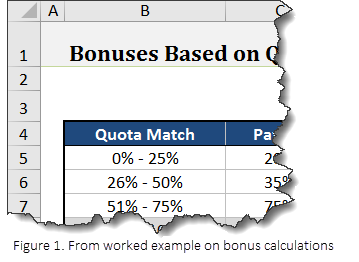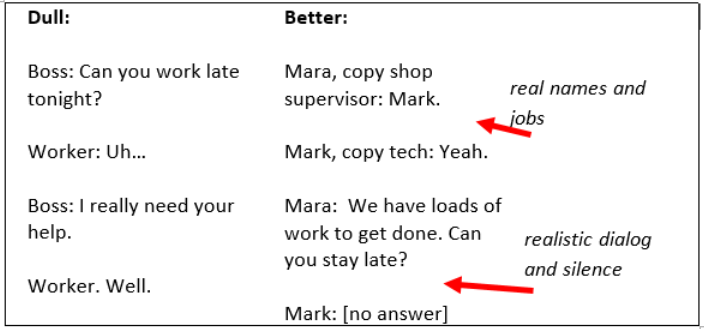ATD Blog
Science of Learning 101: Borrow an Expert's Thinking for Faster Learning, Part 1
Wed Jan 04 2017

When people are new to learning a complex task at work, wouldn’t it be great to borrow an expert’s mind? For instance, if you needed to give constructive feedback to a team member but felt scared to do it. Wouldn’t it be great to see how other people who were scared to provide feedback successfully overcame their hesitancy? This would allow you to see how to apply it in your situation.
We’re in luck! According to the research, there is a specific instructional approach that makes it easier for people who are new to a complex task learn it quickly, remember more, have more confidence, and transfer what they learn to new situations.
I’m talking about using “worked examples” in training to help novices more easily learn complex skills by borrowing (well actually, analyzing) the thinking of an expert. Here are a few examples of these kinds of skills:
write realistic dialog for learning scenarios
troubleshoot a non-working app on an android phone
calculate monthly bonuses based on sales quotas.

Worked examples (sometimes called worked-out examples) show all the steps and final solution. They are an instructional tool used to illustrate how an expert thinks through a task or solves a problem, and they are widely used in teaching mathematics and science. Now, they are being used in other areas. For example, one of the research studies I read use worked examples to teach writing essays.
The scenarios I listed above are potential uses of worked examples in training. To help you wrap your head around this idea, a worked example for calculating bonuses based on sales quotas might include the steps in setting up the formulas in a spreadsheet (see Figure 1).
A worked example on writing realistic dialog for learning scenarios might show dialog with callouts to illustrate how to make the conversation sound more realistic (see Figure 2).

Figure 2: From Worked Example on Writing Better Scenario Dialog
The purpose of having people study worked examples is to analyze how an expert thinks through performing a task or solving a problem. The purpose of using worked examples is to support learning and reduce mental effort (cognitive load) while learning complex tasks and problem solving. These are the typical steps used for building a worked example:
Decide if worked examples will work for your situation.
Show the steps an expert takes to solve this type of problem.
Use appropriate methods that don’t needlessly increase mental effort.
Check to make sure the underlying principles are understood (so people can apply the example).
Develop practice items to apply the worked example. We’ll discuss the first three steps in this article and then follow-up with the last two steps and a full example next month.
Step 1. Decide If Worked Examples Will Work
First, you need to determine if a worked example will work well for your learning needs. Worked examples work best in the following situations:
Worked examples ideally focus on helping people do a complicated task or fix a problem, error, or misconception.
Analyzing how an expert thinks through the task or problem will help those with less expertise learn how to think about this task/problem.
You have access to experts who will “think aloud” how to perform the task or solve the problem and you can use their thinking to build good worked examples.
Step 2. Build the Steps
Now it’s time to build out the steps, using pictures or media as necessary. How do you know what steps are needed? One way to start is to start with a clear problem statement that the worked examples will solve. For example:
People are computing quarterly bonuses using different formulas, which causes problems with validating amounts.
Scenario writers do not write compelling dialog, which makes the scenario less realistic and convincing.
Another way to start is to identify a common misconception that the worked examples will help overcome. Build the worked example, including each step and showing what people need to see. The final step is to show the solution. Use a minimalistic approach—only what is needed. Adding in more information adds mental effort.
It’s worth noting that worked examples are different than job aids. Although similar, a job aid’s main purpose is to support current performance. (Which Service Group # handles this problem? What is the lookup code? Which notice should I send?). The purpose of a worked example is to help people learn how to think about the situation and then apply that understanding. They are designed to improve skill. Unfortunately, if you search for worked examples online, you will find many job aids.
Step 3. Use Appropriate Methods
Research shows that methods that lower cognitive load during learning (see previous article) should be used when building worked examples to reduce the cognitive load of worked examples. The following are the most critical methods to use with worked examples.
When using media, allow people to control the pace by providing controls.
Use labeling (steps, headings, and so forth) and simple, clear, conversational writing.
Integrate text and graphics that go together. (Put callouts next to the item they call out, brief explanations next to what they explain.)
Use narration when explaining visuals rather than textual explanations.
Make worked examples as self-explanatory as possible. Conciseness is needed!
You can show incorrect and incorrect worked examples. But clearly identify the worked example as correct or incorrect.
CORRECT Way to Compute Quarterly Quota Bonuses
INCORRECT Way to Compute Quarterly Quota Bonuses
Next month, I’ll continue this study by discussing step 4 (how to check understanding) and step 5 (provide practice). I’ll also show a complete worked example, and discuss ways to reduce the amount of help that worked examples provide once someone can move on to a bit less support.
The Big Idea: Worked examples free people who are learning a complex task or problem-solving method from having to figure out or discover it on their own. This saves time, complex mental effort, and improves confidence. It can help people gain expertise more quickly by learning from the expertise of others.
References
Atkinson, R.K., Derry, S.J., Renkl, A., & Wortham, D.W. (2000). Learning from examples: Instructional principles from the worked examples research. Review of Educational Research, 70, 181–214. http://h.uib.no/examplewiki/en/images/5/5b/Atkinson%26etc\_2000.pdf
Chi, M. T., Bassok, M., Lewis, M. W., Reimann, P., & Glaser, R. (1989). Self‐explanations: How students study and use examples in learning to solve problems. Cognitive Science, 13(2), 145-182. https://pdfs.semanticscholar.org/9f4b/eefc9b2a0eb8b92b4b79a878d39163c0d428.pdf
Gog, T.V., Kester, L., Paas, F. (2011). Effects of worked examples, example-problem, and problem-example pairs on novices' learning. Contemporary Educational Psychology, 36, 212–218. https://www.ou.nl/Docs/Expertise/OTEC/Nieuws/VanGog\\\_SIG671.pdf
Kalyuga, S., Chandler, P., & Sweller, J. (2000). Incorporating learner experience into the design of multimedia instruction. Journal of Educational Psychology, 92, 126–136. http://www.sp.uconn.edu/~aja05001/comps/documents/Kalyuga\_2000\_expert\_reversal\_effect.pdf
Kyun, S. Kalyuga, S. & and Sweller, J. (2013). The effect of worked examples when learning to write essays in English literature. The Journal of Experimental Education, 81(3), 385–408.
Renkl, A. (1997). Learning from worked‐out examples: A study on individual differences. Cognitive Science, 21(1), 1-29. http://citeseerx.ist.psu.edu/viewdoc/download?doi=10.1.1.467.104&rep=rep1&type=pdf
Sweller, J. (2006). The worked example effect and human cognition. Learning and Instruction, 16(2) 165–169. http://browningmedportfolio.weebly.com/uploads/2/3/8/1/23811553/sweller\_article\_cognitive\_load.pdf
